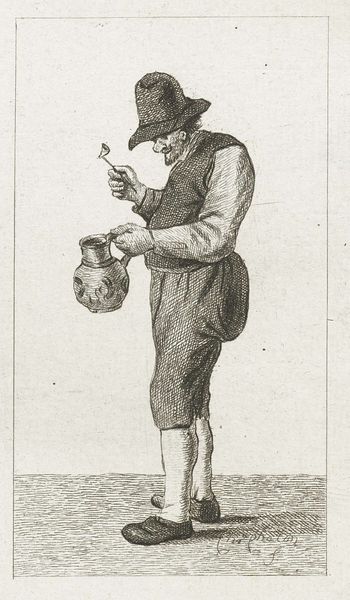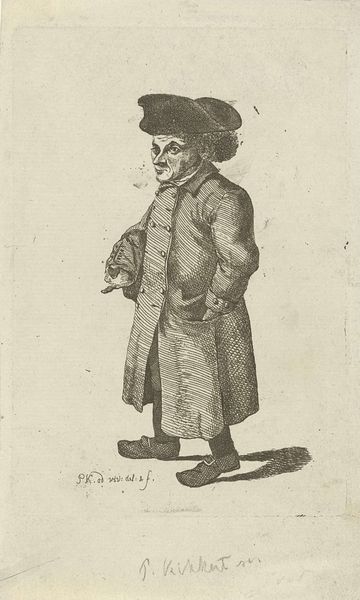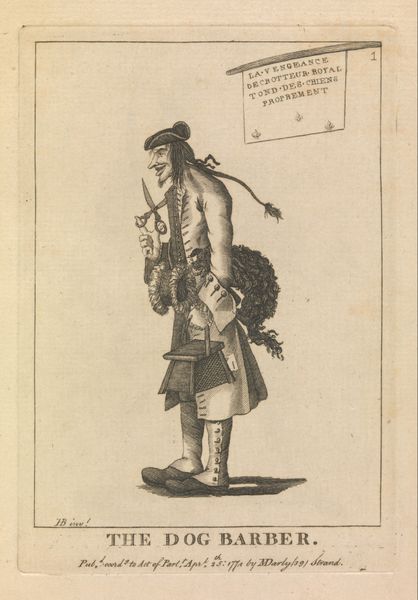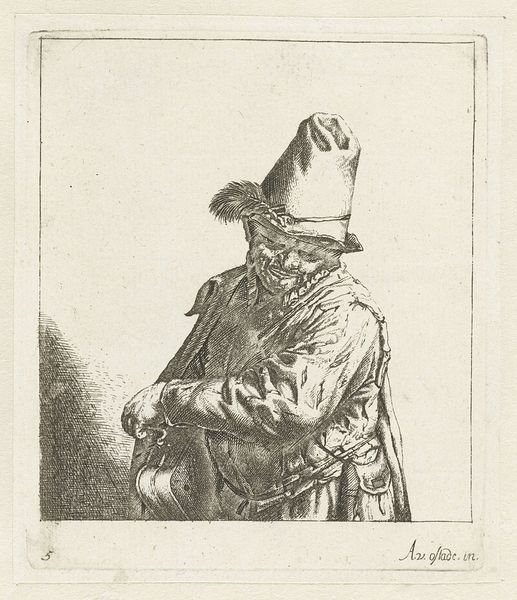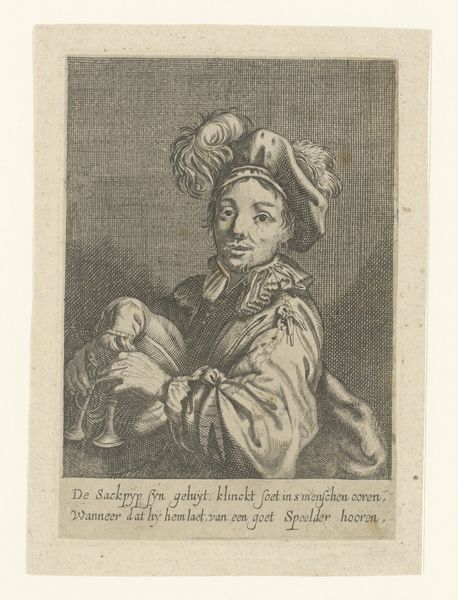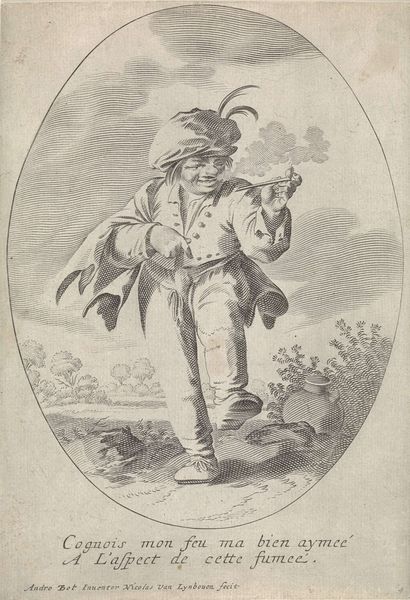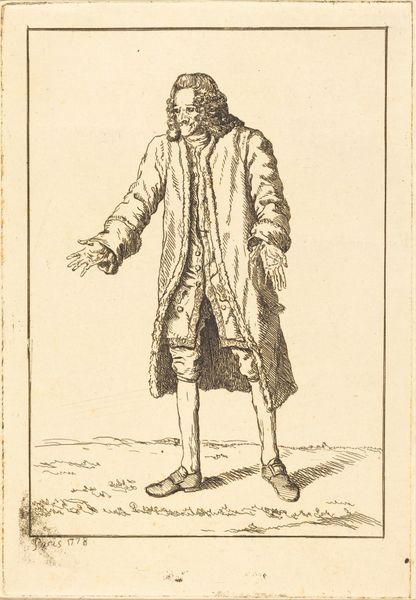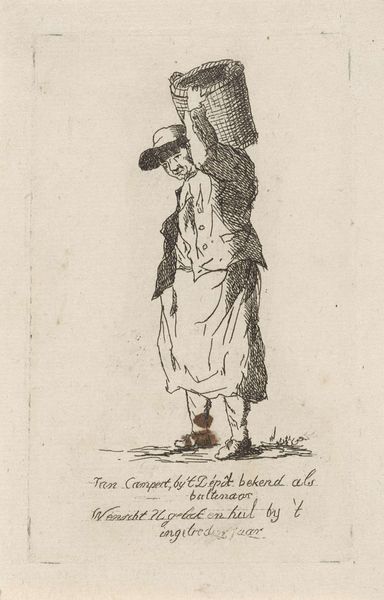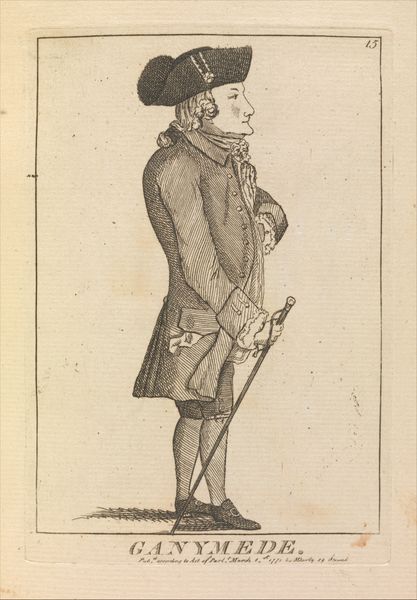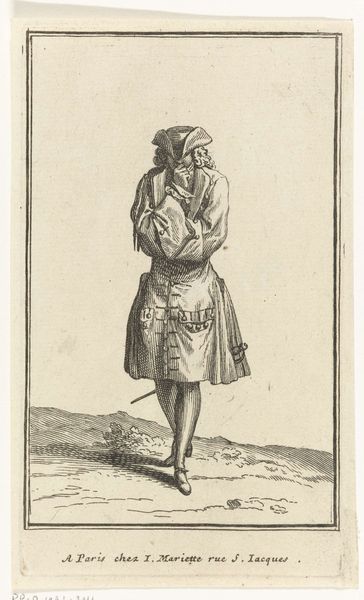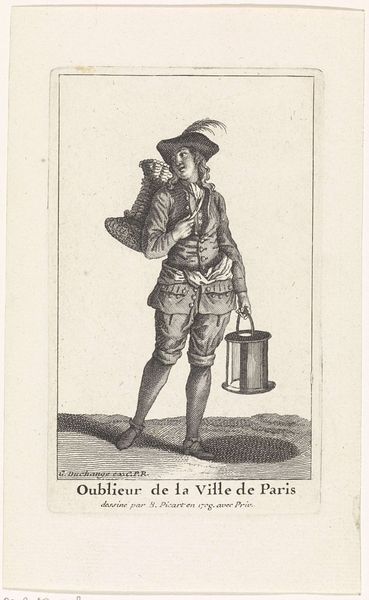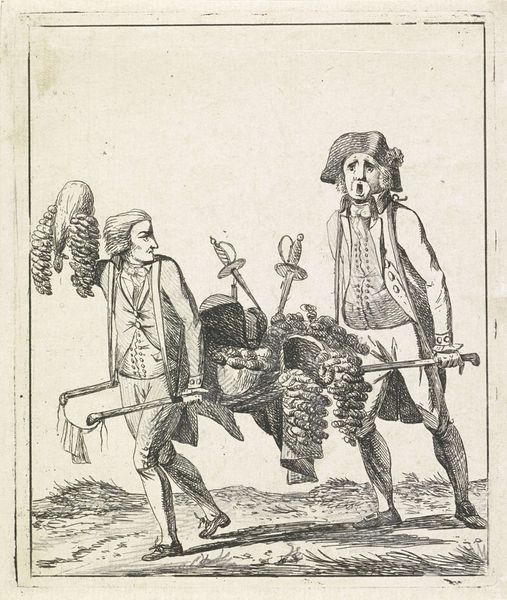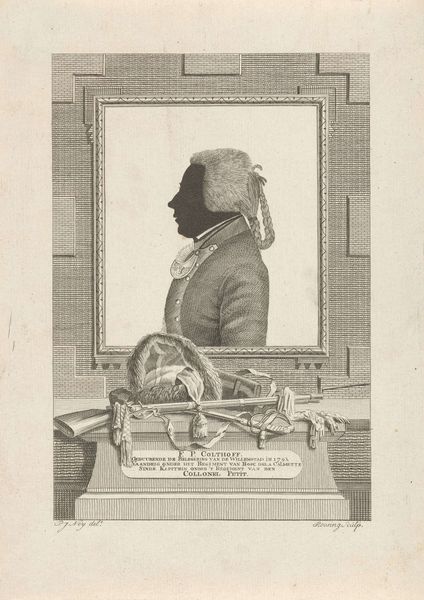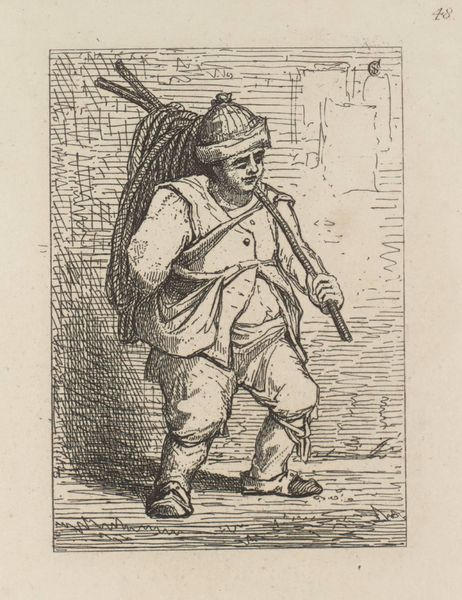
Dimensions: height 116 mm, width 88 mm
Copyright: Rijks Museum: Open Domain
Curator: Pieter Langendijk’s etching, “Zwarte man zonder benen (Swarte Klaas),” created around 1770, certainly makes an impression. What are your initial thoughts? Editor: My first thought is discomfort. There’s something deeply unsettling about this figure, even beyond the obvious physical…abnormality. The harsh lines of the etching only amplify that feeling. What exactly is Langendijk trying to communicate? Curator: That's the crucial question. Langendijk, during the Dutch Golden Age, often engaged with social commentary and caricature. Here, the depiction of a Black man without legs, smoking a pipe, isn’t merely a portrait. We need to unpack the history of Dutch colonialism and the ways in which Black bodies were Othered and exploited to fully understand the imagery. Editor: I’m struck by the visible process. Look at how those cross-hatched lines laboriously create the form. You see it particularly in the shadows. This etching's power, its ability to communicate at all, relies on skilled labor and the consumption of the image by a specific social class. The pipe itself – where did the tobacco come from? What’s the labor history of that object right there in his mouth? Curator: Precisely! This image exists within a matrix of power relations, doesn’t it? The print medium allowed for wide dissemination, thus solidifying and perpetuating stereotypes and colonial ideologies. Even the title, "Zwarte man zonder benen" – Black man without legs – speaks to a dehumanizing gaze. How does this visual shorthand strip away individuality? Editor: It highlights dependency too, both in composition and context. The Black man's literal lack of agency represented by the missing legs mirrors his social and economic dependency in that moment, which the means of artistic production reinforce: Who made the print? Who is purchasing it? What materials were needed, and what histories are bound up within them? It’s all part of that structure of power. Curator: By considering the intersection of race, class, and disability, this etching urges us to reflect on the historical roots of systemic inequality. The lingering gaze forced onto the subject…It remains a potent, and disturbing, commentary on colonial attitudes and enduring power dynamics. Editor: Indeed, an unsettling testament to the way material realities and artistic representations become so deeply intertwined, reflecting the often harsh, and uncomfortable, social and economic truths of its time.
Comments
No comments
Be the first to comment and join the conversation on the ultimate creative platform.
